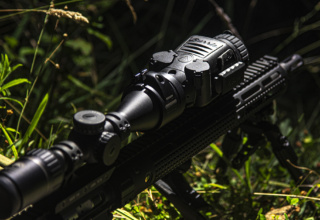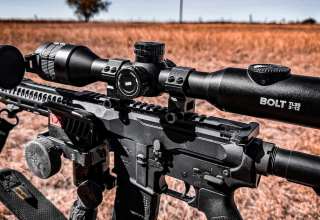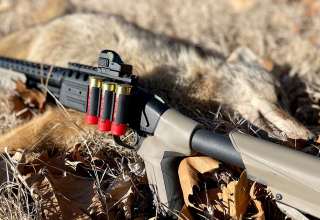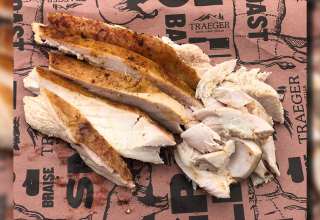Effective late-winter calling means understanding coyote behavior and messing with their heads. Try these calling strategies when coyotes are looking for love.
by Heath Wood
For many Missouri outdoors enthusiasts, the first day of March signifies the opening day of trout season. Anglers gather at their favorite destinations in hopes of kicking off the year with a stringer of rainbow trout. Being an avid predator hunter, the first day of March signifies something higher on my priority list—calling coyotes during the breeding season.
A few years ago, the first day of March fell on a Sunday. I was deciding whether to fish or hunt when a winter storm came through the area, dropping several inches of snow. The storm helped me decide.
While a few of my friends headed to a state park to fish, I made my way through the snow to a location I had been saving. Arriving at a small field, I put my electronic call 35 yards into the open, tucked myself into the edge of the timber, and began a calling sequence.
I started the first sequence with three to four deep howls on a diaphragm call, trying to imitate a male coyote. After howling a few times, I looked down at my remote to select the next call sequence. While doing so, I caught the movement of a coyote bouncing into the field—likely to see why another coyote was in his area. I quickly got on my rifle and made a successful shot at a mere 60 yards.
Using actual coyote sounds to introduce yourself into the area, especially during the breeding period of February and early March, is the perfect choice. During this time, coyotes use an array of sounds to communicate with each other for breeding purposes. Some of these sounds may be used to attract males to females. Different sounds may also be used to show dominance among males as well as dominance among females. No matter the scenario, by mimicking the sounds that coyotes are making, you will likely witness exciting responses and experience a higher success rate.
Male Howls
The first sound that I began to incorporate into my calling is male howls. Throughout most of the year, I continually scout the area I hunt to verify that coyotes are in the country and to get an approximate number. Like a buck in the whitetail rut, during the breeding season of coyotes, male coyotes began traveling a broader area as they search for females in heat. With new males showing up, using their howls is the right choice. When using male howls, you will get the territorial attention of other coyotes, making them curious enough to respond to the call. As for females, when they hear your howls, if the time is right, they will assume that it could be a potential mate. Male howls can be made on a diaphragm call, open-reed hand call, or by using an electronic caller. The male howl is a deeper sounding howl that can be applied throughout the year, yet during the breeding period, the chances of success are higher.
Female Invitation Howl
The second sound to be leveraged during breeding season is the female invitation howl. This sound is just as the name refers—it is an invitation from one coyote to another to say, “Let’s meet up.”
During the breeding season, females will often make this sound when ready to breed. To make this sound on a call, you can use a diaphragm howler. A couple of my favorites include the FoxPro Smokin’ Gun Howler or Johnny Stewart Double Talk’n Dog. Both are a double-reed call, which is excellent for imitating several different types of coyote vocalizations. If the diaphragm is not your favorite, you can use an open-reed call or an electronic call.
The female invitation howl is made by making the basic long howl, only cutting the second note short. When a female makes this sound, she will repeat it several times to make sure she is getting the attention of nearby males. Remember, this is used as part of your calling sequence. When playing the female invitation howl on my FoxPro Shockwave electronic caller, I will let it play for two to three minutes. If using a hand call, I will repeat the sound 7 to 10 times.
Female Whimpers And Whines
My last go-to vocalization is a combination of sounds made by coyotes, specifically, those made during the breeding season. The female whimper, sometimes referred to as a whine, is a sound that can be quite effective.
I prefer to use a whimper sound in combination with howling. The female whimper is a sound that the female coyote makes when being pursued by a male to breed. It consists of several short, high-pitched whines and is used by coyotes to communicate back and forth after pairing up to breed. When using this call, you are telling other coyotes in the area that a female is ready to breed and that she has found a partner. Other males in the area get jealous and territorial and come to investigate. I like this sound because it adds another touch of realism to my calling sequence that will bring in the harder-to-hunt coyotes.
To set yourself apart from other predator callers and be able to up your success rate, you must learn the vocabulary of the animal you are pursuing. By adding these sounds to your calling sequence, you can paint a picture as to what is going on in the life and mind of a coyote. If you create urgency and a need to respond with your calls, coyotes will come in when they usually would not, translating to more fur for you at the end of the season.




















